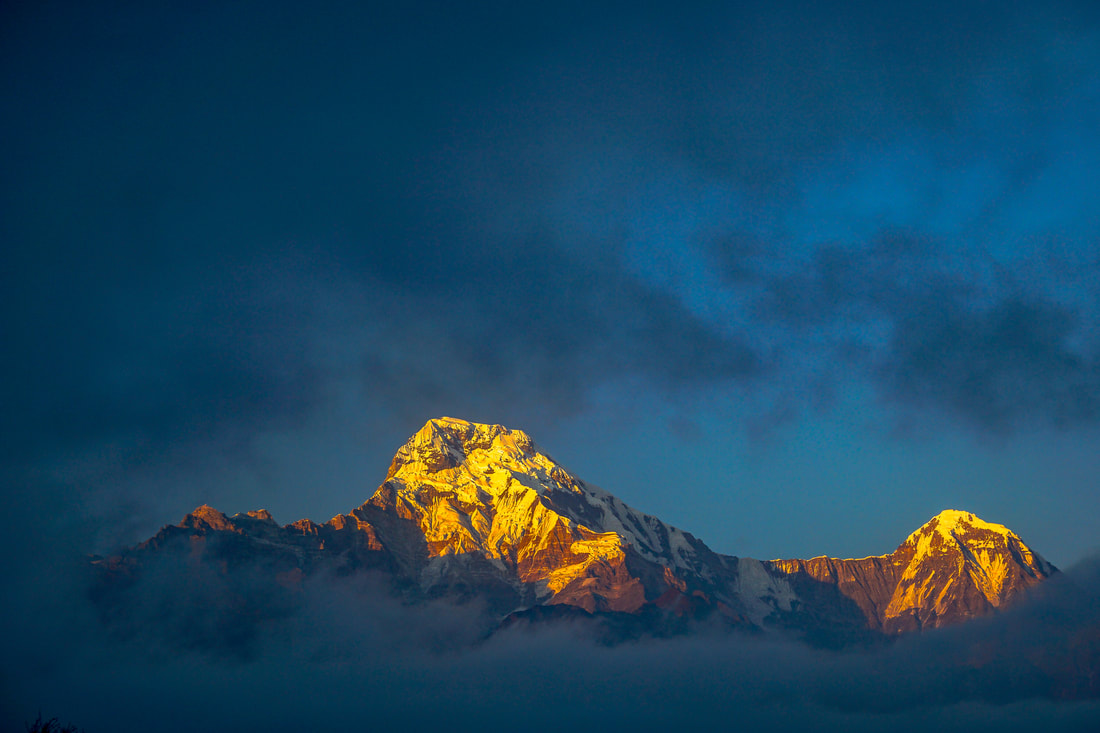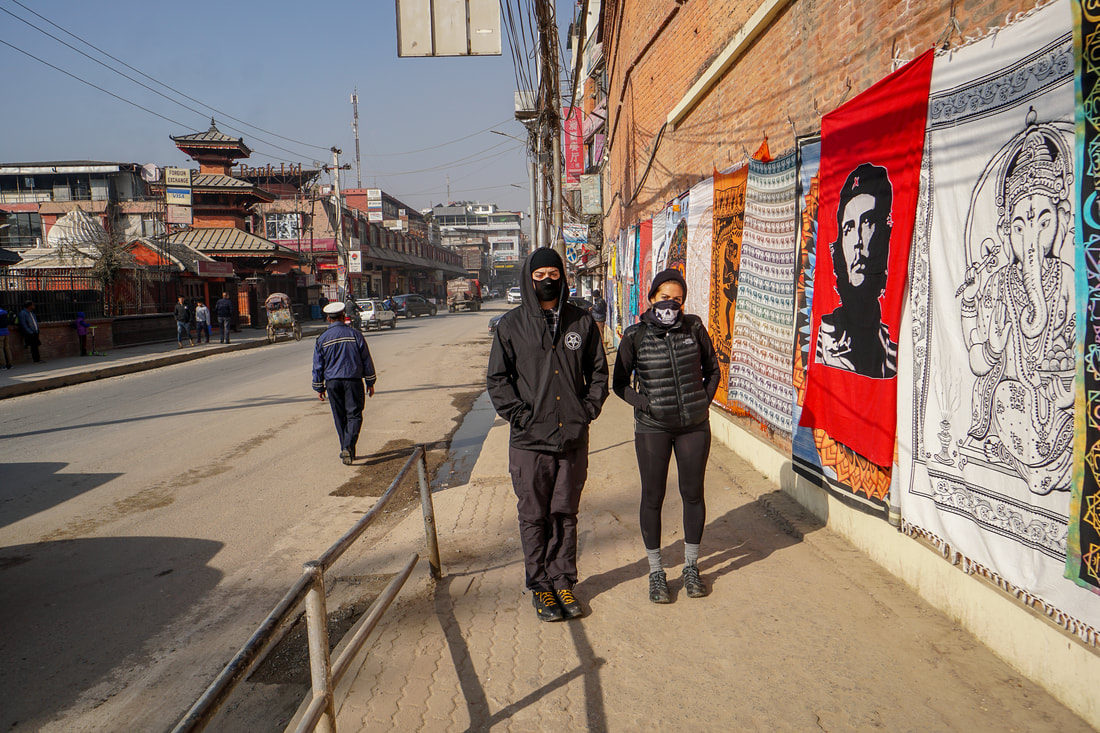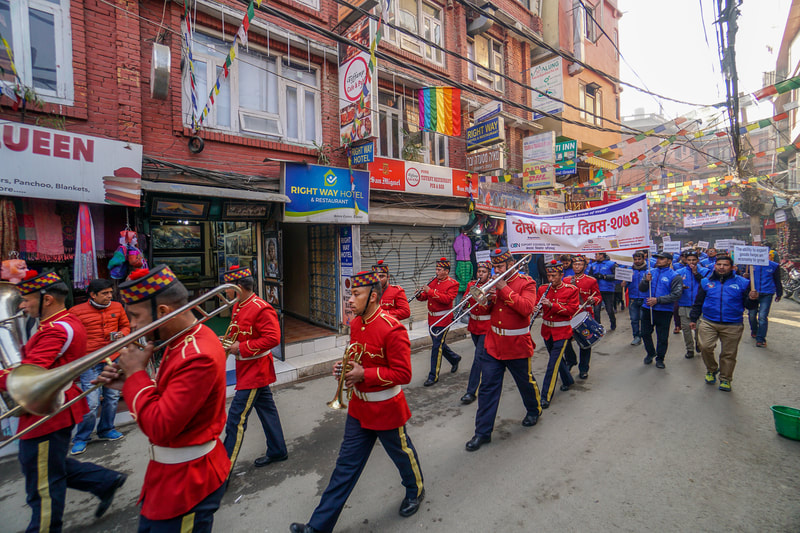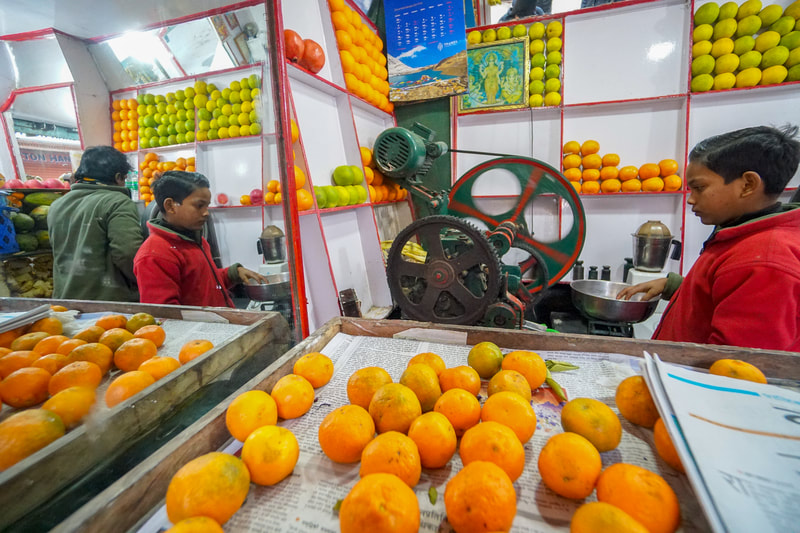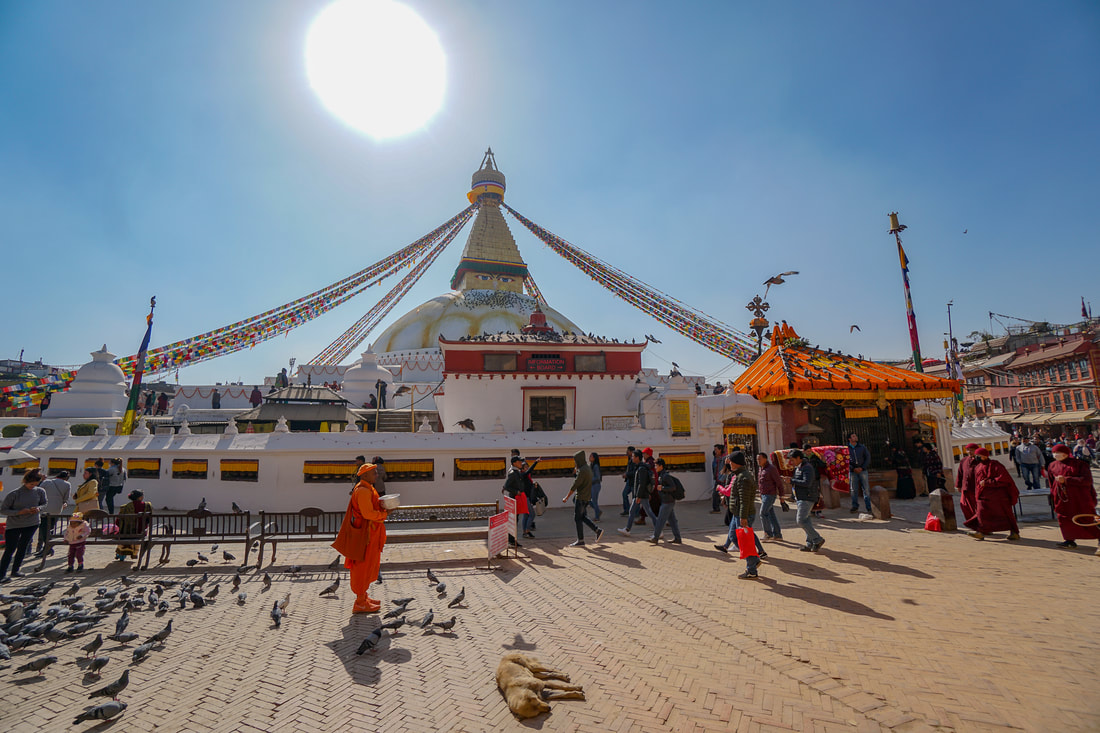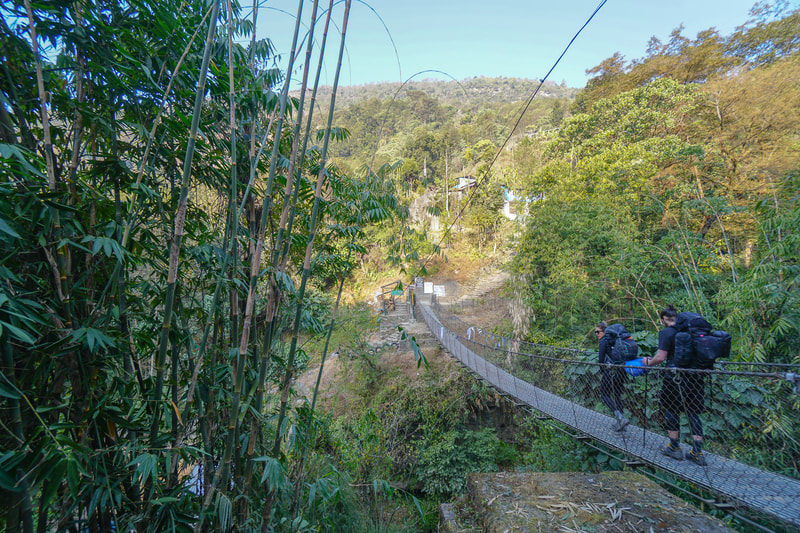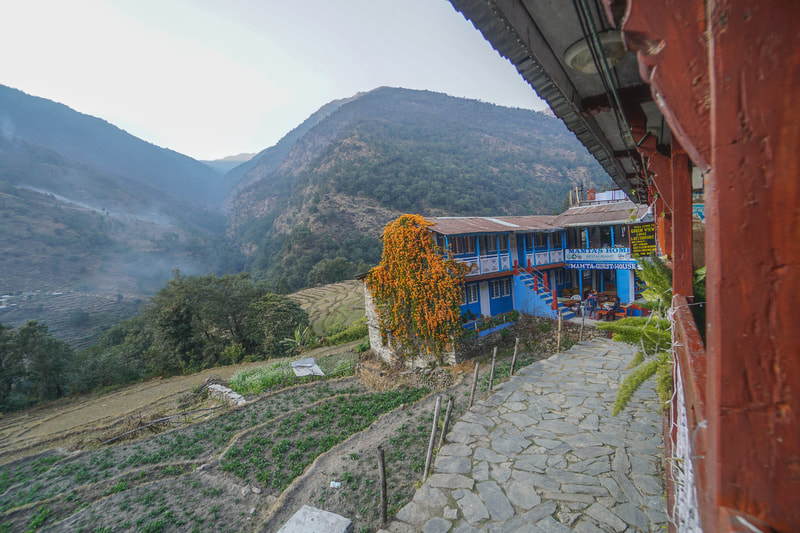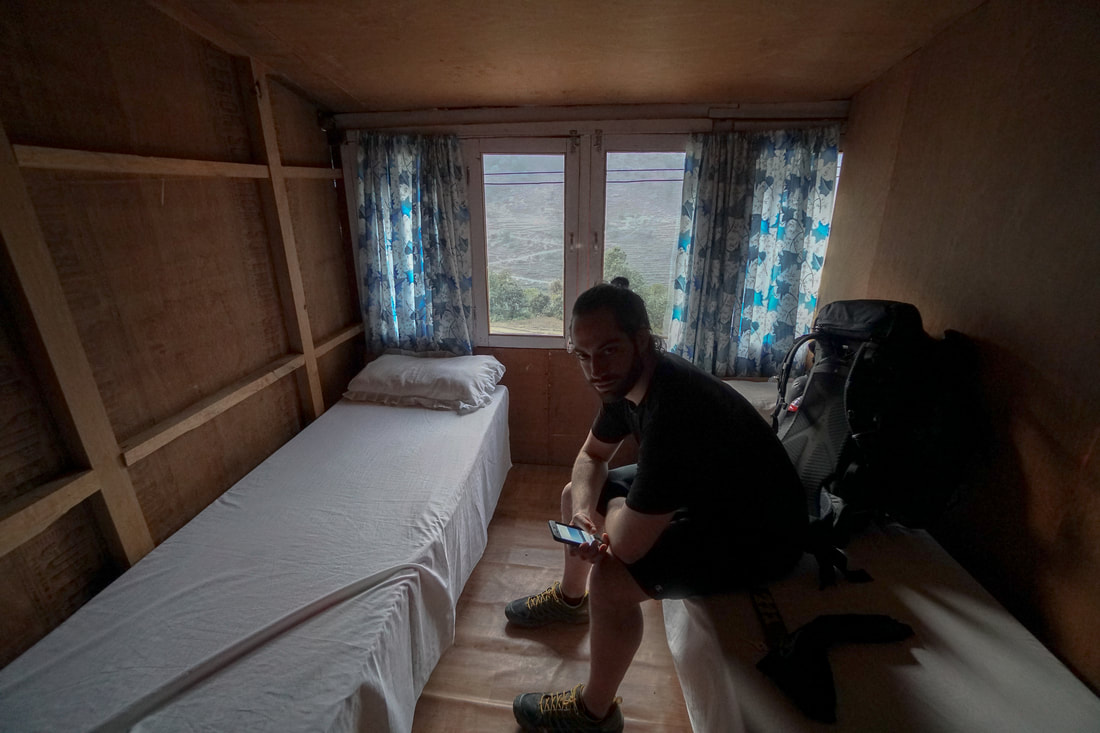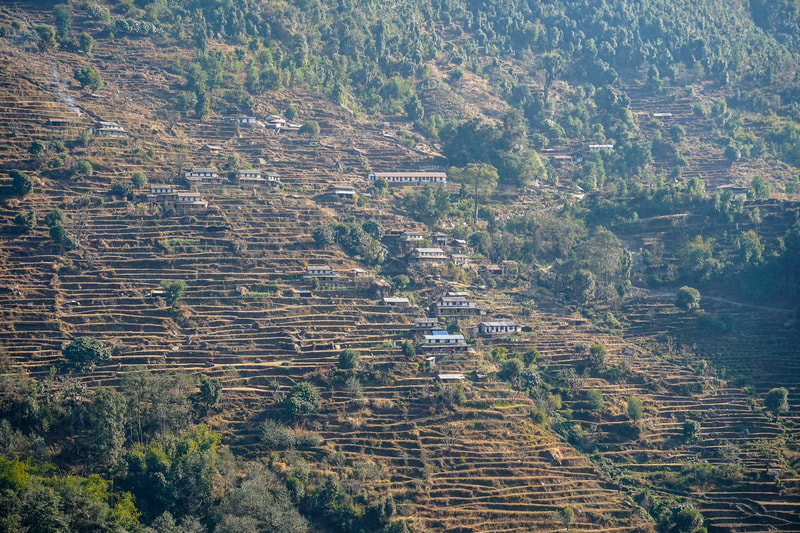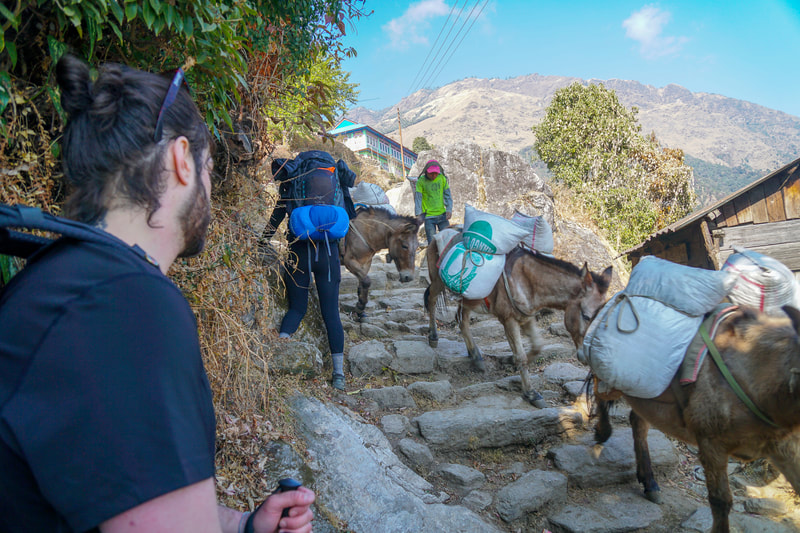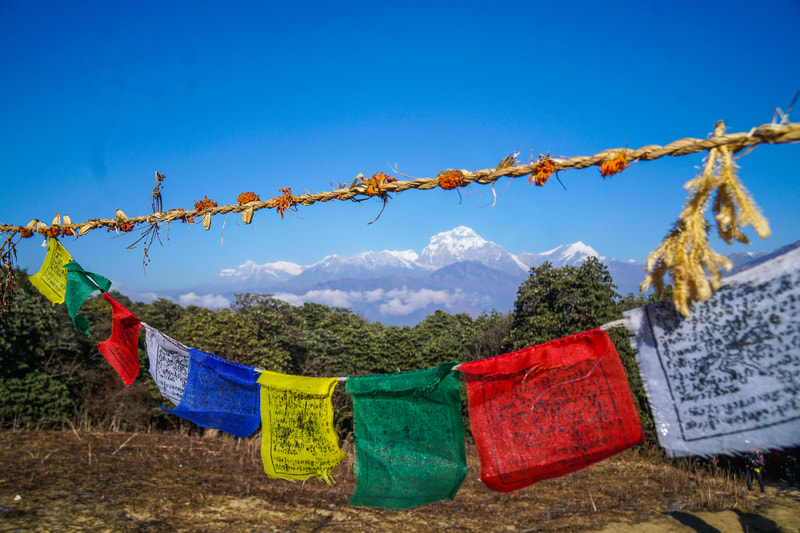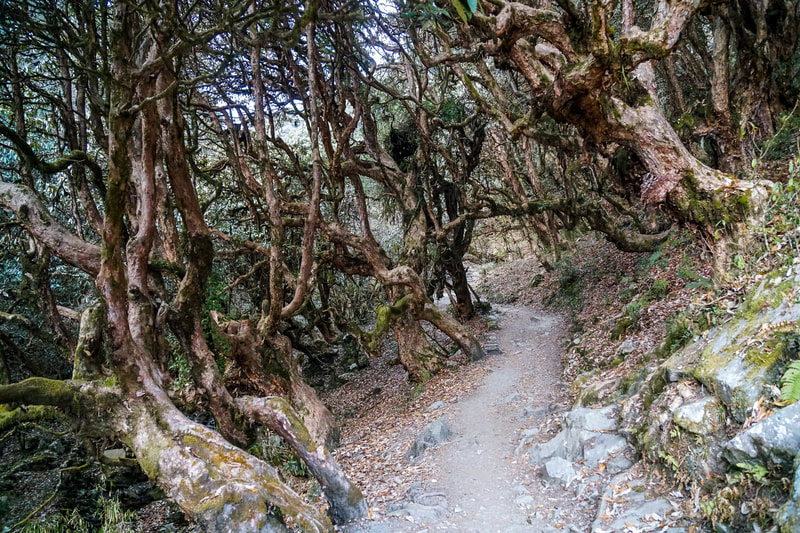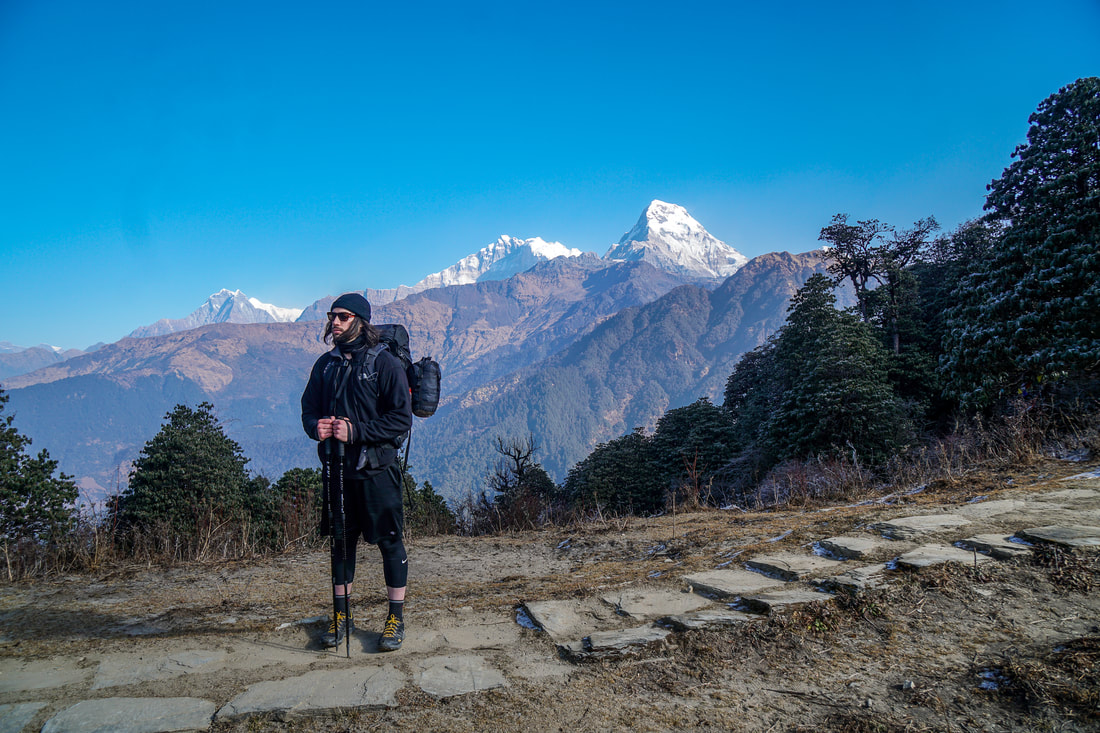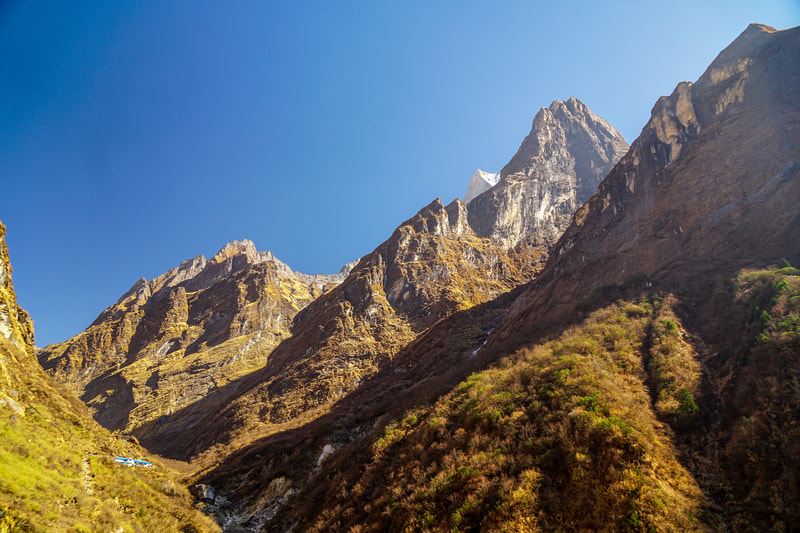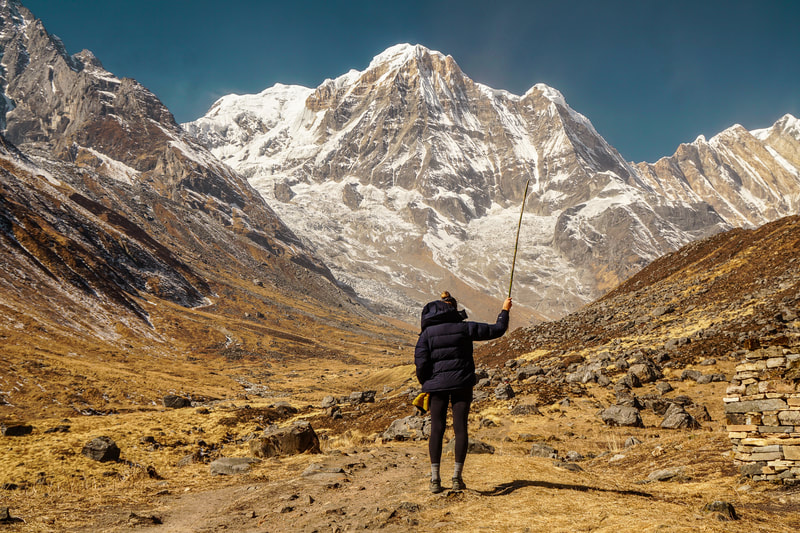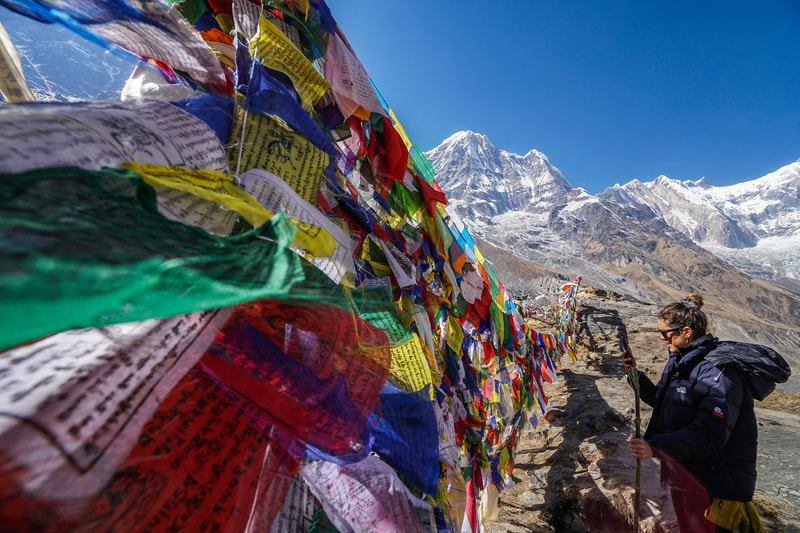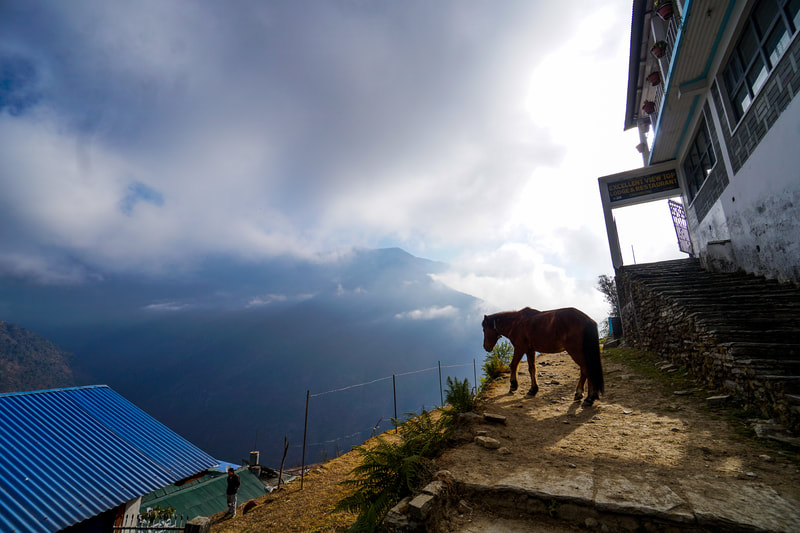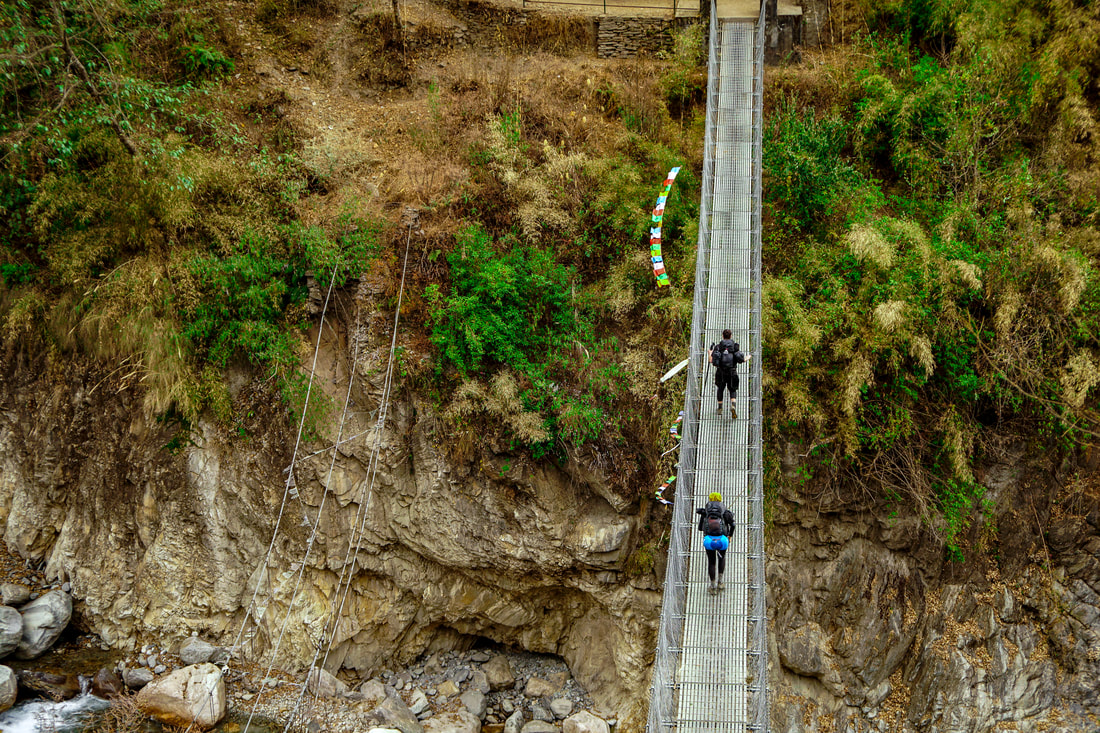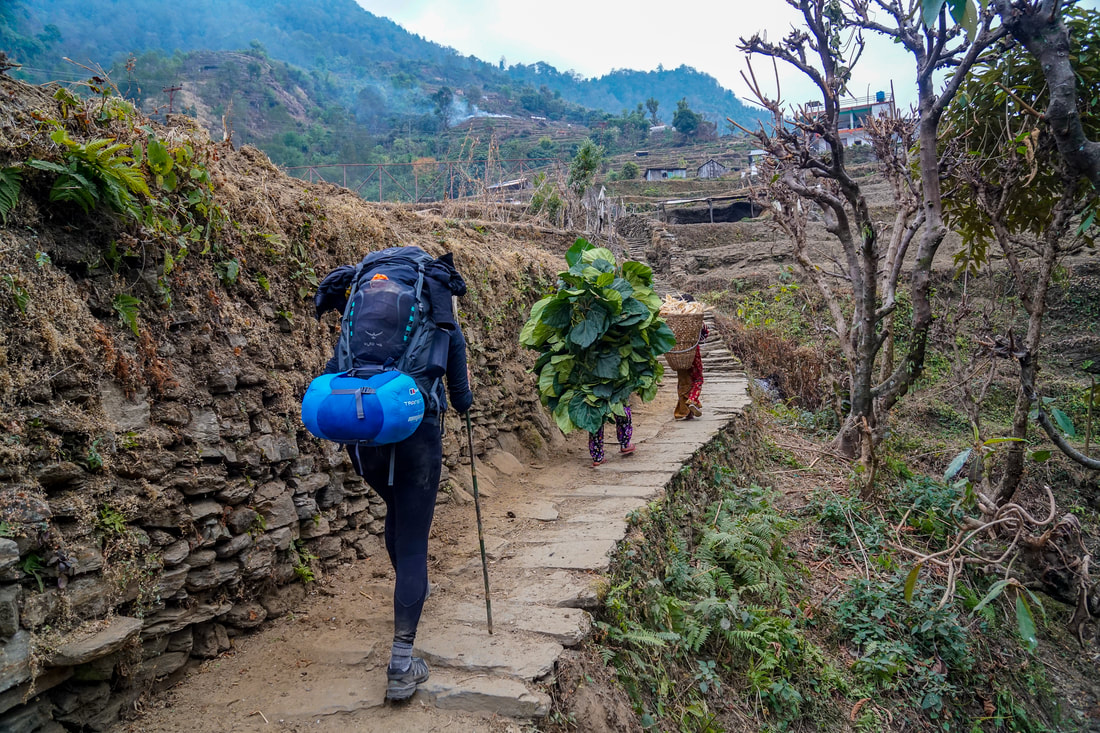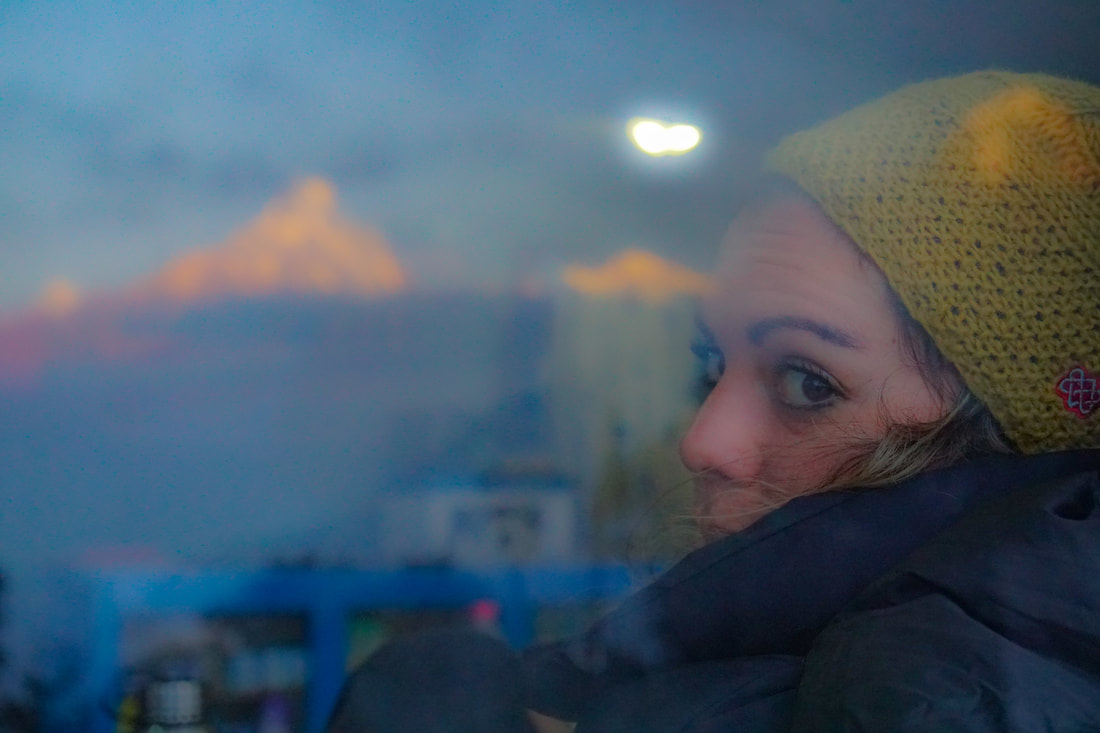|
It was a week before our flight from Bali to Kathmandu when the realization that I would be gone for a month set in. As I started to pack my old hand-me-down back pack which was far too large for my liking, a wave of excitement overtook me. I busted out my table top sewing machine and began to make sleeping bag liners for the three of us from excess linens of a past project. Liners are great for keeping your sleeping bags clean while on the trail and we were planning to go deep into the mountains. My girlfriend and her brother would be accompanying me to Nepal, with similar expectations. Our mission was to abandon modern life and its comforts to practice self-reliance, and gain perspective through nature. Other than purchasing plane tickets, breaking in our trail shoes, and increasing our fitness levels, our preparations were minimal. Nepal has a visa on arrival for U.S. citizens and since the tourist economy focuses largely on trekkers they have a plethora of backpacking/equipment stores to acquire the necessities for the trail. It would be cheaper arriving in Nepal with only the clothes on your back, and acquiring everything on the spot. The products quality ranges from mainstream brands like The North Face and Patagonia to their bootleg counterparts. When westerners travel abroad there exists the common tendency to over pack for every possible scenario. Not only does this strategy require more money to buy name brand products which are the only options in the west, but packing so vastly requires bigger checked in luggage. For me, there is an inverse correlation between the amount of things I pack and my trip satisfaction. Packing less allows me to focus on the experience more. After arriving at our accommodation in Thamel Kathmandu my girlfriend and I explored the neighborhood and shopped around for our trekking gear. Her brother would be joining us the following evening. We would spend the next few days in Kathmandu acquiring gear and exploring the city before heading to Lakeside, Pokhara, the gateway to the Annapurna mountain range Flying the short 30 minute journey in a small 20 person plane from Kathmandu to Pokhara we were able to see the size and beauty of this small country. From the plane you could see on one side the border of Nepal and Northern India, and on the other the Himalayan mountain range. For such a small country Nepal possesses vast beauty which is hard to contemplate. The enormous mountains with their valleys, rivers, lakes, trees, layered ecosystems… makes it easy to forget you are in a country roughly the size of New York State. Lakeside, a small town overlooking a picturesque lake, situated on the outskirts of Pokhara, is a common stop for adventurers on their way to the Annapurna circuit. The mixture of adventure sports enthusiasts and barefoot hippies give the town a laid back vibe. We spend a few days in Lakeside which consists of hiking, planning our trek, buying trekking permits, and making last-minute preparations. During this time we agree our goal is to hike to Annapurna Base Camp pending good weather. It should take us no more than 2 weeks. The next morning we set off with a driver in a 4x4 truck. After three hours of winding up and down mountains to reach the start of the trail, the scale of our journey begins to set in. Away from civilization with only our backpacks, trail bars, water purification tablets, head lamps, and warm clothes, in the frigid month of January, we looked at each other with uncertainty. Is this what we wanted? Were we ready to journey through an unfamiliar mountain range, in an unfamiliar country? Had we prepared well enough? In a state of overwhelming disbelief we slowly began to walk. Since we arrived later than expected in the day we decided to walk for a couple of hours and find accommodation around sunset, which ended up being in the small town of Birethanti. Luckily the infrastructure for trekking in Nepal is some of the best available in the world. There are ‘teahouses’ setup randomly along the most common trails run by locals who live in the hillside villages. Prices range from USD $3.00 in the lower altitudes to USD $12.00 in the higher altitudes. The simple lodging consists of a room with thin walls and a bed, public bathroom, and dining room where you can order food. This setup allows trekkers to pack lighter than one would normally on a backpacking adventure. I ordered garlic soup (good for acclimatization) and Dal Bhat (a local dish consisting of rice, lentils, potatoes, pickled vegetables) for dinner, and watched the dwindling light upon the hillside view. After dinner, with headlamps strapped to our heads, we made our way to bed, and clamored into our sleeping bags to escape the cold. Upon waking I immediately felt like sh*ting my pants. I ran to the squat toilet downstairs and unloaded. It was the garlic soup. I know it. None of my other comrades had the garlic soup and they were ok. Feeling a bit disgruntled to start the first full day of the trek with such bad luck, I joined my friends for breakfast and packed my belongings. We were out the door at 7:00 AM. This would be the most difficult part of the trek. Our goal was to make it to Ghorepani before sunset covering an altitude gain of 1,725 meters. Not understanding the climbs intensity, we set off. We literally walked uphill all day until we reached our accommodation at around 7:00 PM. We stopped periodically for snacks and water. After trudging into Ghorepani we quickly found accommodation, ate dinner and fell asleep. Since we gained so much altitude we would be spending two nights in Ghorepani. This is necessary to avoid AMS or more commonly called altitude sickness. AMS has the potential to affect all trekkers from 2500m and higher. Your body needs time to adjust to smaller quantities of oxygen in the air. At 5500m the air pressure is about half that of sea level (less oxygen). To safely climb at altitude professionals recommend to spend 2-3 nights between 2000m and 3000m before going higher. From 3000m add an extra rest day each 300m of added altitude gain. The next morning we climbed to Poon Hill and back to our accommodation to move our legs and stretch. We ate a lot, played card games, and I made frequent trips to the bathroom. My sickness stayed with me for the rest of our trip requiring me to drink excessive amounts of water to ensure hydration. The next morning, after breakfast, we set off on what would be the most scenic leg of our journey. The stretch from Ghorepani to Tadapani lies along a high ridge which overlooks the Annapurna mountain range. Passing through misty rhododendron forests while seeing epic mountain landscapes in the distance was one of the highlights of our trip. As the days went on our legs grew more accustomed to walking up and down mountains with weight on our backs. We began to wake up earlier, walk more spiritedly, and joke more often. We read and played card games in the evenings and walked silently or joked happily during the days. When we were hungry, we stopped and ate. When tired, we paused and rested. We passed town after town and got to experience life as it is for the local Nepalese who live in the mountains. Finally we reached Annapurna Base Camp, which culminated in many days hard work and willingness to step outside our comfort zones. When we arrived there were very few people around, probably due to it being the off-season. We lingered at the top for around 2 hours before making our way back down the hill to the next tea house. The feeling of accomplishment and oneness with nature was oozing from us. We couldn’t believe the shift that had taken place from the beginning of our trip to now. When you travel on foot and have to carry all of your belongings on back you become more mindful of what you carry and consume. You start to realize you don’t need as much as you think for comfort and satisfaction. In fact it seemed like the less we had materially, the more happy we were. The opportunity to travel is an opportunity for self-reflection. To live outside of ones comfort zone forces the person to adapt to their surroundings, sometimes at the cost of the persons default programming. It's easy to get so lost in our current reality, that truth, becomes difficult to see. Sometimes it's necessary to disconnect to reconnect... By Sky Cutler
1 Comment
|
TREKKING NEPALTurning to the mountains for perspective |
